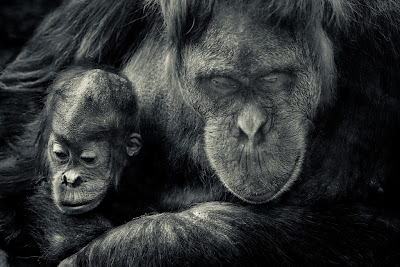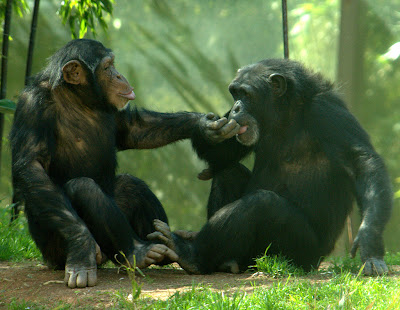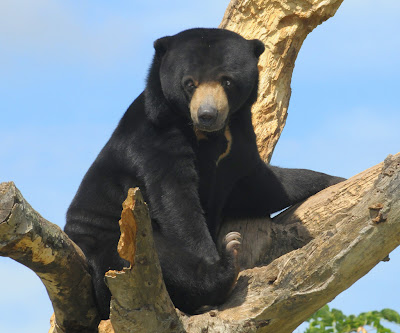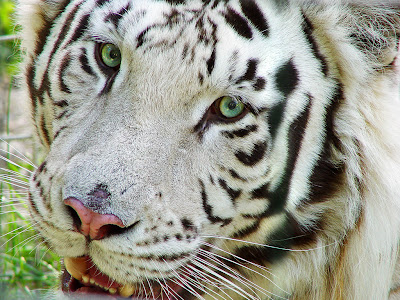You need not go to deep forests to take amazing wildlife photographs, in fact zoos provide even better chances to safely observe and study the animals at close quarters. There are a variety of subjects in the zoo; it is assured that you will find them at the same place and could spend as much time as you wish with each subject. Most major cities have zoos and in recent years, increased awareness about the need to conserve these animals has led to scientific studies to provide better conditions to the animals in zoo. Having mentioned the advantages of photographing animals in zoos, now let us discuss the challenges one would face and methods to overcome them. In this article we will discuss about tips to take amazing photographs of animals in the zoo.
 |
| Photo By Patrick Bouquet |
1. Respect Zoo Rules
This is perhaps the most important rule and if you will adhere to it then it will save you a lot of trouble and would drastically increase your chances of getting good shots. Remember Zoo rules are not just for the safety of animals but it is more importantly for your own safety. Never jump over railings or fences, do not overstep the boundary lines, and if the zoo rules forbid you from using a flash… well don’t use it. Most animals’ eyes are far more sensitive to light than that of humans and the use of direct flash could cause much pain and trauma to the animals, it can even cause temporary blindness; so be compassionate and do not use flash. It is to be remembered that zoos don’t just cage animals as exhibits; they also house abandoned infants, injured animals and others that are unlikely to survive on their own in wild; Zoos acts like a safe heaven for such animals.
2. Get Friendly With the Staff
No one knows the inmates and their individual characteristics and preferences better than the zoo staff. Staff members at the zoo spend a lot of time with the animals and they tend to have a deep bond with the animals. Most animals respond well to their commands. They know the times when each animal is liveliest and in good mood, they could tell you the best time of the day to shoot, even call the attention of an animal to you and make them look at the camera, many animals like monkeys actually greet the staff, call out to them for food etc, they communicate via many facial expressions, gestures and body language. Getting friendly with the zoo staff is your ticket to getting exclusive shots of the animals.
 |
| Photo By Valerie |
3. Plan Your Shoot – Prioritize
Every zoo will have a detailed map / plan of the zoo grounds with indications as to which type of animals could be found in each area. Have a good look at it and prioritize your shoot accordingly. This will ensure that you do not miss the chance to shoot the most important ones in your list.
 |
| Photo By Valerie |
4. Visit the Zoo on an Overcast Day
Since it is assured that you would find the animal at the same spot whenever you go, you have the liberty to visit the zoo any day, so plan your visit during an overcast day. As opposed to harsh sunlight with deep shadows and high contrast the light during an overcast day is very soft, producing diffused shadows and more saturated colours making your shots look much better than the ones shot on a clear day. The real reason behind this effect is that the clouds present overhead acts as huge soft-boxes diffusing the sunlight and make it fall on the subject from different angles minimizing contrast.
5. Time Your Visit
Most animals are very lively during early morning hours and most retreat to some shade and rest when the sun is fully up.. There will also be only fewer visitors around during early morning hours. Also apart from the visiting hours, zoos also have designated feeding times. Most animals rest after being fed. Do consult the staff about the feeding hours of each animal you wish to photograph and time your visit accordingly.
 |
| Photo By Valerie |
6. Tips for Avoiding Fences
One of the main challenges shooting at zoo is to avoid fences from spoiling your frames. You could try the following tips to minimize the impact of wired fences. If you are using a compact camera or a DSLR with a lens of relatively small diameter then you could try to put the lens between the wire. Do this with caution as it could either make the animal agitated or curious, in both cases the chances of you getting hurt are high, so use your judgement whether it is appropriate or not in the given situation.
 |
| Photo By Tambako The Jaguar |
Use a tele photo zoom lens ideally longer than 200mm and use it in combination with a wide aperture setting and focusing on the subject, this way you have only very limited depth of field and could blur the distracting fence in the foreground so that it is not visible in the frame. One trick is to choose a portion of the fence which is not directly lit by sunlight as it will be easier to blur out than portions which are brightly lit.
7. Shooting Through Glass
Many a times, while photographing at the zoo, you will be required to shoot animals through thick glass. Shooting through glasses require you to pay attention to certain details. Choose the portion of the glass which is most clear and has fewer scratches or blotches. Clean the glass with a tissue or a piece of cloth, (your handkerchief would do). If you have a lens hood with you use it and place the lens close against the glass. Remember holding your camera parallel to the lens would help avoid reflections.
8. Get your Backgrounds Right
Getting the right background is vital. Be very careful about what constitutes your background, avoid fences, cages or other man-made objects in the background, changing your shooting angle to a very high position will help you get the ground/grass in the immediate area the animal is in as your background and getting down low would help to get the sky as your background. Using a wider aperture will help blur any unwanted elements from the picture, and if none of these work try a tight crop of the animal by zooming in with your tele lens.
 |
| Photo By Valerie |
9. Photograph Other Visitors
In the zoo you will be presented with many opportunities to photograph people, especially children having a fun time with animals, these also make good subjects for photography as you would be able to take candid shots which could capture their reactions like excitement, surprise, fear etc. Some people would not like to be photographed and so taking permission from them (especially from parents before photographing children) will be a good idea to consider.
10. Respect Other People
When involved in photography, it is quite common to get fully engrossed in the act so as to be oblivious of what is happening around you. Always make sure that you are not obstructing other people’s views and are not causing them any inconvenience. If you are using a tripod to set up your shot; make sure you are not blocking the walkway or anything. If there are other photographers at the scene and even if they are just people trying to capture a frame or two with their point and shoots or mobile, do wait for your turn and do not rush others. Obeying these rules will help ensure that photography will be allowed in zoos in the future.
Post a Comment